What’s your kitchen crime?
There are 20 common ‘kitchen crimes’ which could lead to food poisoning, but we can all do some small things in the kitchen to crack down and make sure the food we cook at home is safe.
We’ve all been there, peering into an open fridge wondering “is that still okay to eat?”
The fact is, there are all sorts of ways we put ourselves and those that we prepare food for at risk of food poisoning. From undercooking food to ignoring ‘Use-by’ dates, the little habits we're all guilty of can let harmful bacteria such as campylobacter or listeria grow and spread. The consequences can be more than an upset tummy. In fact, for the very young, older people and those with a weaker immune system, food poisoning can have a devastating effect.
We’ve identified 20 ways you can clean up your act and reduce the risk of illness in the home. Whether you’re innocent or guilty it’s easy to make some small changes in the kitchen and reduce the risk of food poisoning.
Take the quiz to check your criminal record
Reduce the risk of giving you or your family food poisoning. Find out if you’re committing any of the 20 ‘kitchen crimes’ with our quick interactive quiz.
20 "KITCHEN CRIMES"
Dodgy Chiller
 Someone who forgets to check their fridge is cold enough (0-5°C), using a thermometer or built in temperature gauge, to slow the growth of bacteria that may be present in the food.
Someone who forgets to check their fridge is cold enough (0-5°C), using a thermometer or built in temperature gauge, to slow the growth of bacteria that may be present in the food.
Raw Griller
 Someone who eats burgers and sausages that are still pink in the middle or have pink or red juices. Food poisoning bacteria such as E. coli can be present on minced red meat, meaning that it can be mixed into the middle of burgers and sausages. Cooking these thoroughly kills off any food poisoning bacteria.
Someone who eats burgers and sausages that are still pink in the middle or have pink or red juices. Food poisoning bacteria such as E. coli can be present on minced red meat, meaning that it can be mixed into the middle of burgers and sausages. Cooking these thoroughly kills off any food poisoning bacteria.
Fridge Stuffer
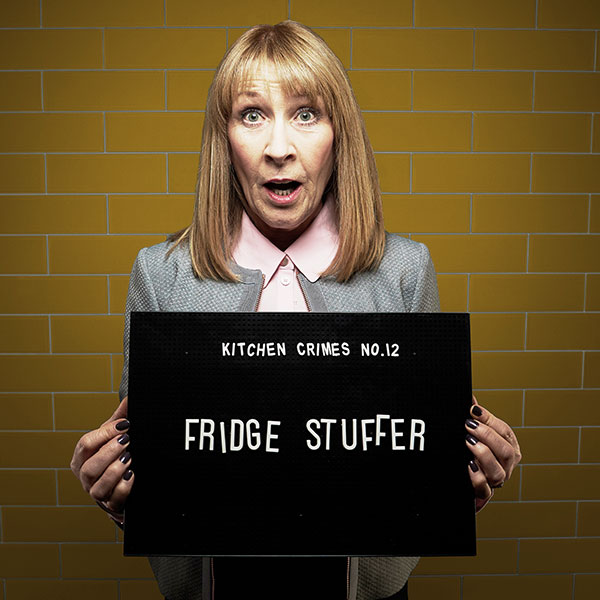 Someone who crams their fridge full of food. This raises the temperature, allowing food poisoning bacteria to grow more quickly.
Someone who crams their fridge full of food. This raises the temperature, allowing food poisoning bacteria to grow more quickly.
Ham Sniffer
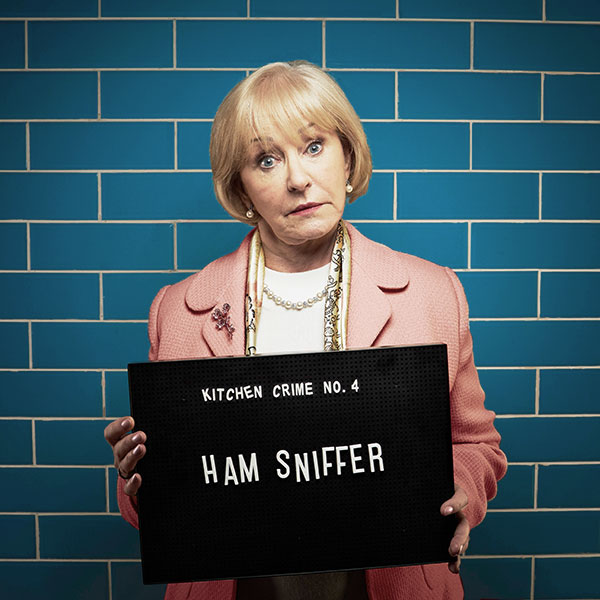 Someone who thinks they can tell if food poisoning bacteria are present by smelling the food, instead of trusting the Use-By date on the packet. You can’t smell or taste harmful bugs like listeria, which can grow in many perishable foods such as cooked sliced ham. The Use-By date is there to tell you how long the food will stay safe.
Someone who thinks they can tell if food poisoning bacteria are present by smelling the food, instead of trusting the Use-By date on the packet. You can’t smell or taste harmful bugs like listeria, which can grow in many perishable foods such as cooked sliced ham. The Use-By date is there to tell you how long the food will stay safe.
5 Second Believer
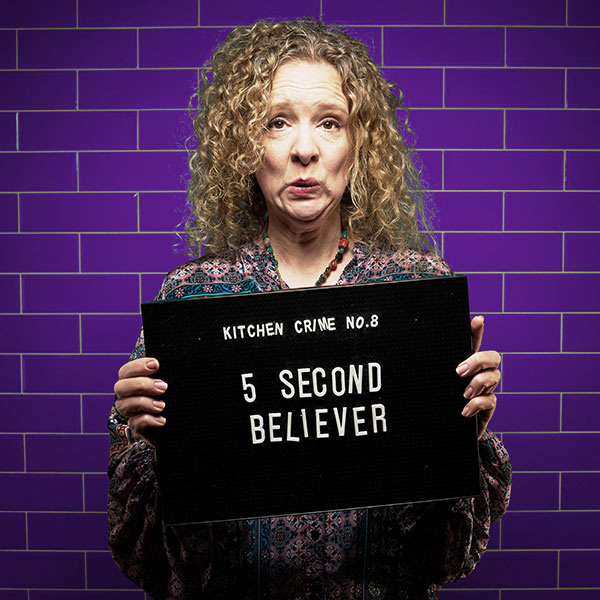 Someone who drops food on the floor but eats it anyway. E. coli and other bacteria can transfer from surface to surface pretty much instantaneously.
Someone who drops food on the floor but eats it anyway. E. coli and other bacteria can transfer from surface to surface pretty much instantaneously.
Fact
There’s an estimated 43,000 cases of foodborne illness in Scotland every year. That’s 5,800 visits to the GP and around 500 people needing hospital treatment.
Multi Pinger
 Someone who thinks it’s ok to reheat leftovers more than once. The more times you cool and reheat food, the greater the opportunity for food poisoning bacteria to grow.
Someone who thinks it’s ok to reheat leftovers more than once. The more times you cool and reheat food, the greater the opportunity for food poisoning bacteria to grow.
Filthy Boarder
 Someone who doesn’t wash chopping boards thoroughly in between preparing raw meat and ready-to-eat food, meaning food poisoning bacteria can be transferred to food that won’t be cooked before eating it.
Someone who doesn’t wash chopping boards thoroughly in between preparing raw meat and ready-to-eat food, meaning food poisoning bacteria can be transferred to food that won’t be cooked before eating it.
Counter Melter
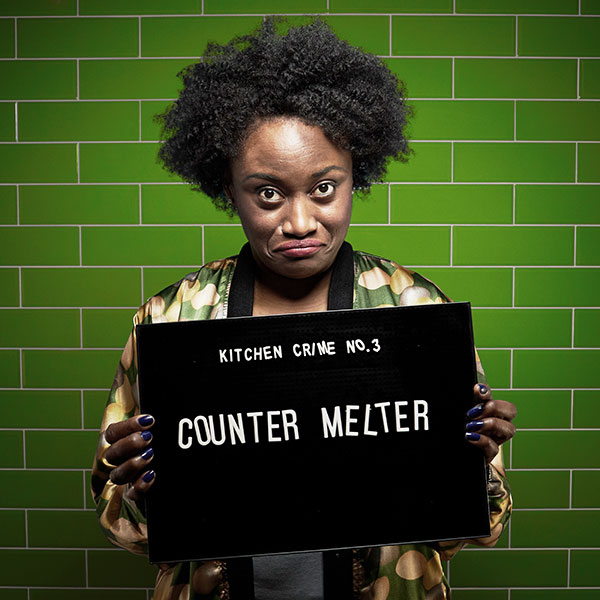 Someone who defrosts meat outside of their fridge, which can cause bacteria to grow if it becomes too warm too quickly.
Someone who defrosts meat outside of their fridge, which can cause bacteria to grow if it becomes too warm too quickly.
Open Tinner
 Someone who stores open tins in the fridge, instead of emptying contents into a sealed container. This can expose food to harmful bacteria, and in some cases, can cause tin from the can to be transferred to the contents. When you open a can of food and you're not going to use all of it straight away, empty the food into a bowl, or other container, make sure it’s covered and put it in the fridge.
Someone who stores open tins in the fridge, instead of emptying contents into a sealed container. This can expose food to harmful bacteria, and in some cases, can cause tin from the can to be transferred to the contents. When you open a can of food and you're not going to use all of it straight away, empty the food into a bowl, or other container, make sure it’s covered and put it in the fridge.
Fridge Mingler
 Someone who doesn’t keep cooked and uncooked food separated in their fridge. This can mean food poisoning bacteria which haven’t been killed by cooking can be passed to other foods you’re about to eat.
Someone who doesn’t keep cooked and uncooked food separated in their fridge. This can mean food poisoning bacteria which haven’t been killed by cooking can be passed to other foods you’re about to eat.
Fact
Poor food safety practices in the home increase the risk of food poisoning. Whilst for most people this usually results in sickness and diarrhoea, it can lead to much more serious illness for those who may be more vulnerable to infection including the very young, older people and pregnant women.
Top Shelfer
 Someone who doesn’t store raw meat and poultry covered at the bottom of the fridge, meaning it can drip and transfer food poisoning bacteria to other food.
Someone who doesn’t store raw meat and poultry covered at the bottom of the fridge, meaning it can drip and transfer food poisoning bacteria to other food.
Double Chopper
 Someone who uses the same kitchen utensils for raw meat as they do vegetables and other foods, meaning any bacteria passes over to their ready-to-eat food.
Someone who uses the same kitchen utensils for raw meat as they do vegetables and other foods, meaning any bacteria passes over to their ready-to-eat food.
Undercooker
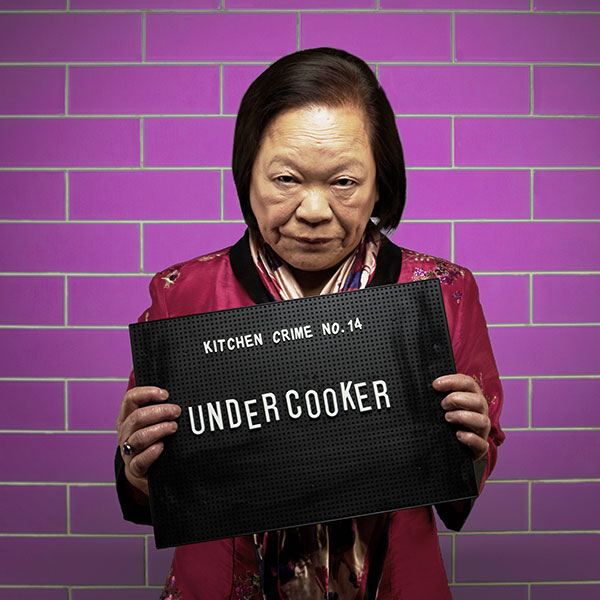 Someone who doesn’t cook food thoroughly until it’s steaming hot all the way through – especially when reheating leftovers. It’s a good idea to use a thermometer to check that the food is 75°C or above to ensure that harmful bacteria have been destroyed.
Someone who doesn’t cook food thoroughly until it’s steaming hot all the way through – especially when reheating leftovers. It’s a good idea to use a thermometer to check that the food is 75°C or above to ensure that harmful bacteria have been destroyed.
Kitchen Zookeeper
 Someone who thinks it’s OK to let their pets roam about the kitchen, potentially spreading germs over kitchen work tops
Someone who thinks it’s OK to let their pets roam about the kitchen, potentially spreading germs over kitchen work tops
Label Snubber
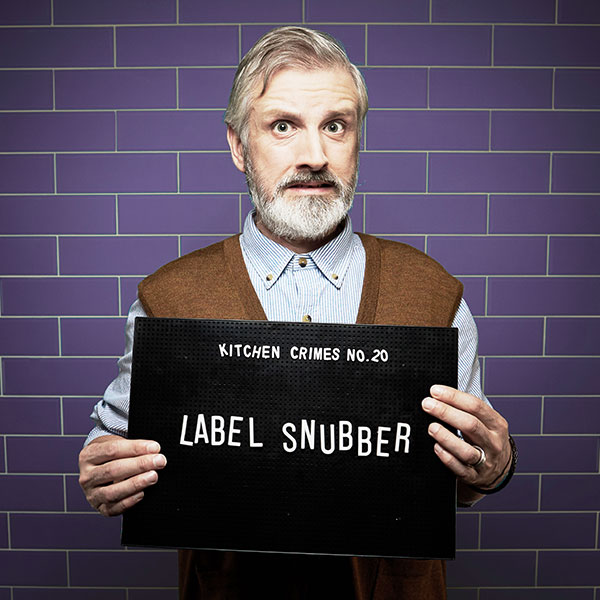 Someone who doesn’t read any information on labels, whether it’s a use by or best before date, or information which helps them handle, store, and cook food safely.
Someone who doesn’t read any information on labels, whether it’s a use by or best before date, or information which helps them handle, store, and cook food safely.
Fact
Research suggests that over half (56%) of people in Scotland aren’t concerned about food hygiene in their home.
Grimy Wiper
 Someone who doesn’t regularly change or wash their dish cloths and tea towels, creating the ideal place for germs to breed.
Someone who doesn’t regularly change or wash their dish cloths and tea towels, creating the ideal place for germs to breed.
Chicken Washer
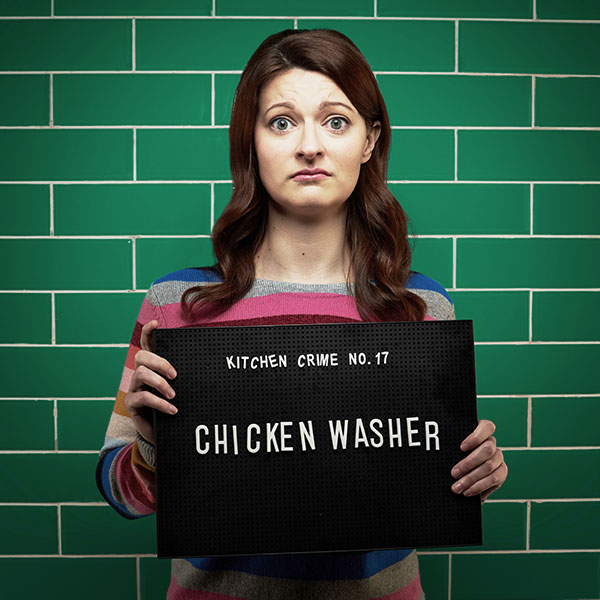 Someone who washes chicken, which can splash and spread the nasty food poisoning bacteria Campylobacter onto other surfaces.
Someone who washes chicken, which can splash and spread the nasty food poisoning bacteria Campylobacter onto other surfaces.
Mucky Prepper
 Someone who doesn’t wash their hands before preparing food, causing them to transfer germs from their hands on to food people are about to eat.
Someone who doesn’t wash their hands before preparing food, causing them to transfer germs from their hands on to food people are about to eat.
Risky Birder
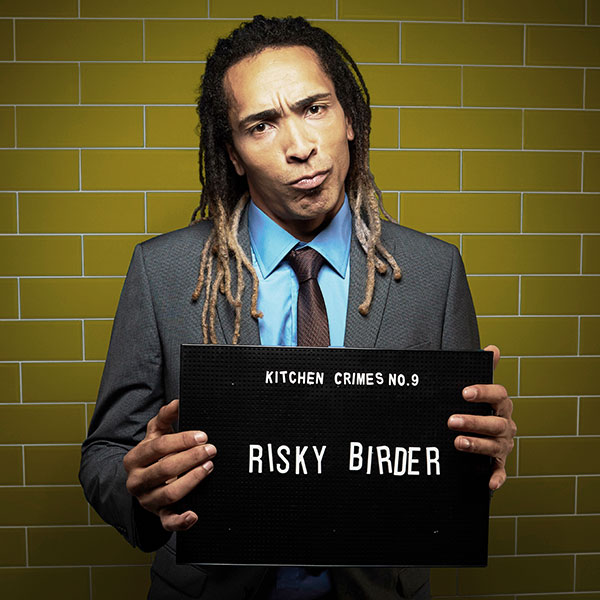 Someone who eats chicken and turkey without checking that it’s been cooked properly. Eating poultry which has red juices when you cut into it or is still pink in the middle means there is a high risk of campylobacter bacteria being present which can make you very ill. It’s better to use a meat thermometer to check that the meat is cooked to 75°C or above.
Someone who eats chicken and turkey without checking that it’s been cooked properly. Eating poultry which has red juices when you cut into it or is still pink in the middle means there is a high risk of campylobacter bacteria being present which can make you very ill. It’s better to use a meat thermometer to check that the meat is cooked to 75°C or above.
Meaty Mitter
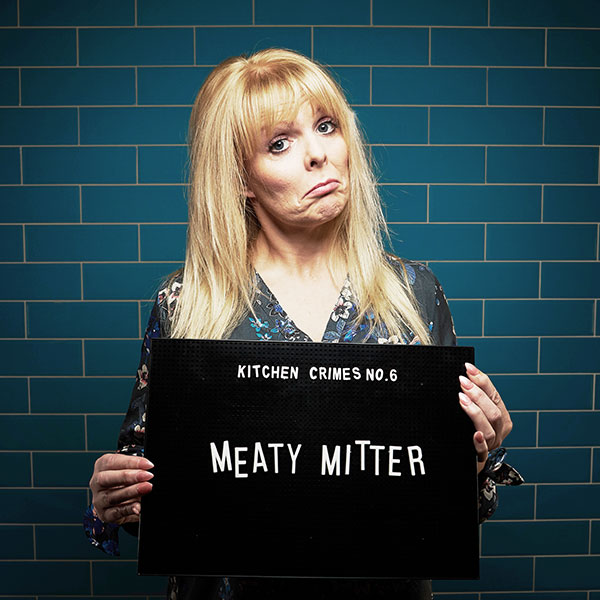 Someone who doesn’t wash their hands after touching raw meat or poultry, and then goes on to touch other foods, transferring harmful bacteria such as E. coli and Campylobacter.
Someone who doesn’t wash their hands after touching raw meat or poultry, and then goes on to touch other foods, transferring harmful bacteria such as E. coli and Campylobacter.
By making some small changes, you'll help us crack down on 'kitchen crime' and help you and your family avoid illness.
Read more about Food Safety when cooking at home or eating out.